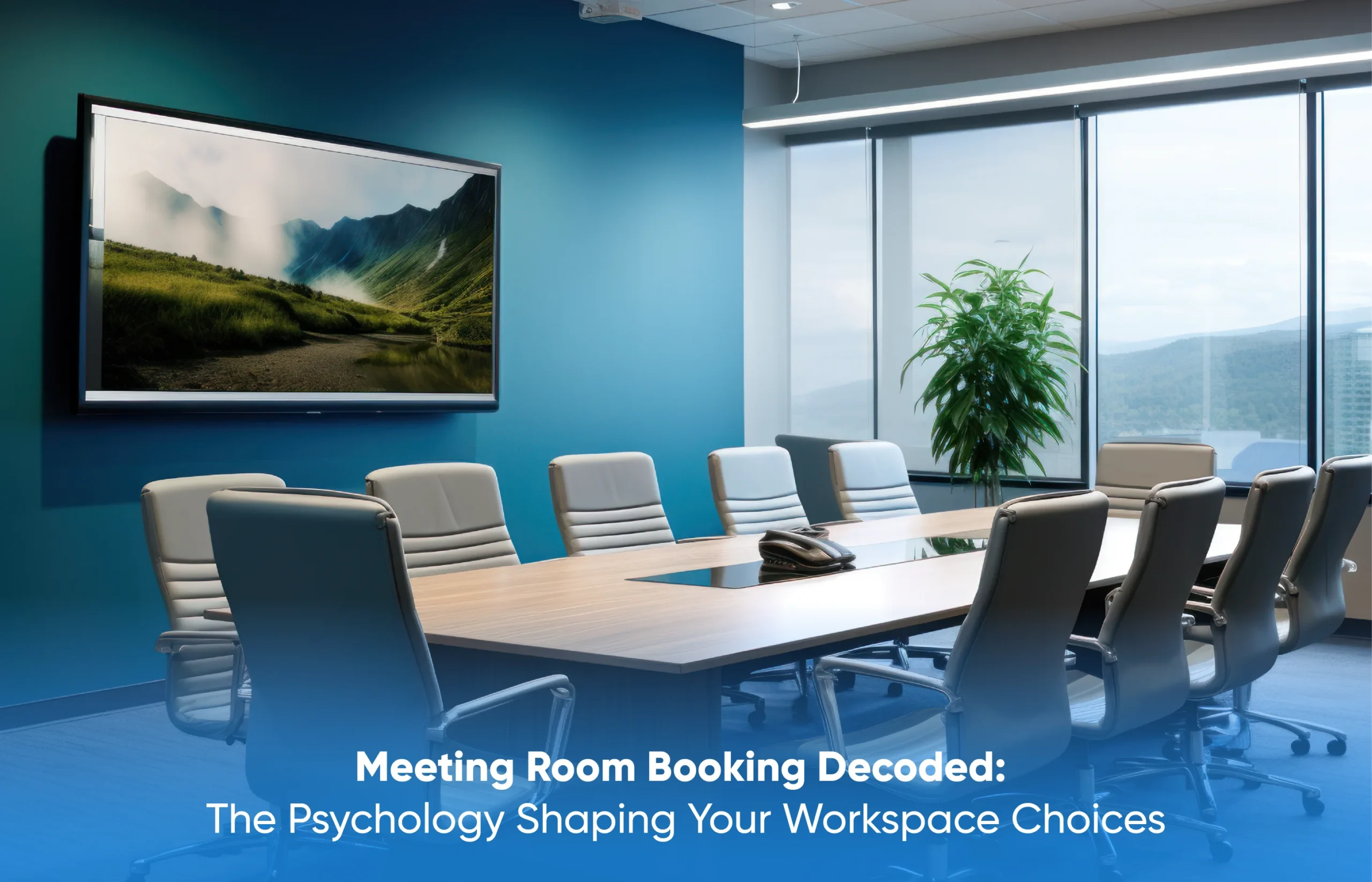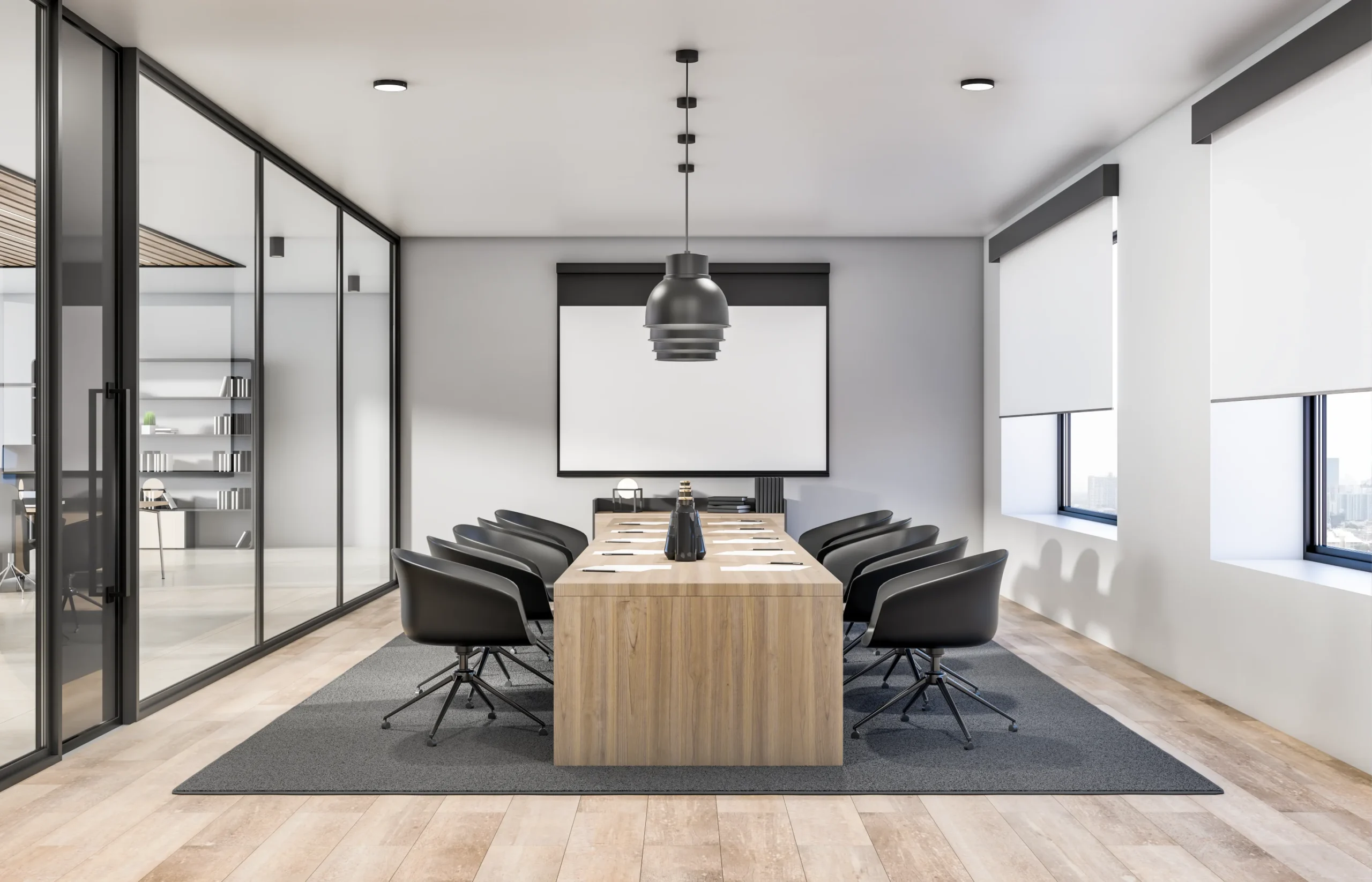Meeting Room Booking Decoded: The Psychology Shaping Your Workspace Choices

Introduction
Ever wonder why some meeting rooms are always in high demand while others remain largely empty? It’s not just about room size or location; fascinating psychology shapes our choices and preferences in booking shared spaces. This write-up focuses on understanding the key aspects of meeting room booking decisions and how these insights can transform your workspace into a more efficient, user-friendly environment.
Now, let’s uncover the hidden factors that drive meeting room preferences and see how understanding them can lead to a smarter, more efficient workspace management.
The Impact of the Environment on Meeting Room Booking

The physical environment of a meeting room has a significant impact on its popularity. Elements such as natural lighting, comfortable seating, and inviting design can make specific rooms more attractive to employees. Research shows that rooms with ergonomic furniture and open layouts enhance focus and productivity, drawing people in naturally. For instance, a room with large windows and abundant natural light tends to feel energizing and welcoming, making it more likely to be booked frequently than dimly lit or enclosed spaces. Thus, room environment plays a substantial role in shaping booking preferences.
Perception and Room Choices
Beyond physical attributes, our perception of a meeting room also influences booking decisions. Rooms perceived as prestigious or well-equipped can attract more bookings, even if other spaces offer similar features. Known as perceptual bias, this tendency leads employees to prioritize rooms they view as desirable, often bypassing equally functional spaces that lack the same perceived appeal. This perception-driven preference can affect room utilization, making certain rooms overbooked while others are consistently available.
The Role of FOMO in Meeting Room Booking
Fear of Missing Out, or FOMO, is not just a social media phenomenon; it influences workplace dynamics, including meeting room bookings. When employees see a popular room frequently booked, they may assume it enhances productivity or offers an ideal environment, prompting them to reserve it whenever possible. This FOMO-driven behavior creates a cycle where the same rooms are repeatedly overbooked, while other suitable spaces are underutilized. Recognizing that effective meetings can occur in any well-equipped room can help break this cycle, encouraging employees to explore different spaces rather than defaulting to the most popular rooms.
Cognitive Biases in Meeting Room Selection
Cognitive biases, such as confirmation bias and availability bias, play a role in meeting room booking decisions. Confirmation bias leads individuals to favor information supporting their beliefs, while availability bias prompts people to rely on the most immediate options. For example, a team that frequently books a specific room may believe it’s the best option, reinforcing this choice over time. When in a hurry, team members may instinctively reserve the familiar room without considering other equally suitable options. Acknowledging these biases can help teams diversify their choices and make more balanced room booking decisions.
Social Norms and Booking Habits
Social norms significantly shape meeting room booking habits, often turning certain rooms into the default choice for specific teams or meeting types simply because “that’s how it’s always been done.” This phenomenon, known as social norming, leads employees to follow established booking patterns without questioning them. For example, if a department frequently uses a particular room for team meetings, others are likely to follow this pattern, even if other rooms are available. These habits can limit room utilization, and breaking them may require intentional effort. Encouraging teams to explore different spaces based on availability can lead to more balanced and efficient use of all meeting rooms.
Enhancing the Meeting Room Booking Experience
Understanding the psychology behind meeting room booking is essential for creating a positive and efficient booking experience across the organization. Here are some strategies to optimize meeting room utilization:

1. Create Attractive, Functional Spaces:
Design meeting rooms to be comfortable, visually appealing, and equipped with ergonomic furniture to boost engagement and productivity. Rooms that foster focus will naturally attract more bookings.
2. Implement a Transparent Booking System:
A clear, easy-to-use room booking system reduces the risk of double bookings and confusion. It allows employees to view available spaces and select rooms that meet their needs.
3. Encourage Flexibility:
Promote a culture of flexibility by encouraging employees to consider all available rooms rather than defaulting to popular choices. This approach can prevent bottlenecks in room scheduling and improve overall space usage.
4. Provide Booking Insights:
Displaying room utilization data can help employees understand which rooms are frequently used and available, allowing them to make more informed booking decisions.
A seamless and user-friendly meeting room booking experience improves organizational efficiency and enhances employee satisfaction. When employees feel comfortable in the spaces they book, they’re more likely to hold effective, engaging meetings that benefit the entire team.
Conclusion:
Recognizing the psychology behind meeting room booking can lead to smarter, more balanced space utilization. By fostering flexibility, improving room design, and promoting a transparent booking system, workplaces can enhance productivity and create a more satisfying, user-friendly environment for everyone.
Reach out to us at info@aastroelectronics.com to learn all about meeting room booking management. Follow Aastro Tech Electronics on Linkedin, Facebook, and Instagram to stay updated.
